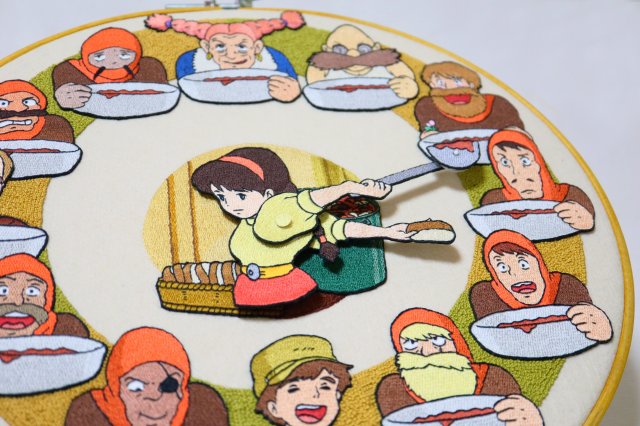
Anime fan’s year-long embroidery project gets a magical ending.
Studio Ghibli is famous for its old-school ways, preferring hand-drawn animation techniques over computer generated ones. The process requires a lot more time and effort, but the hand-crafted touch creates a warmth and beauty that gives Ghibli movies their unique charm.
Someone else who knows about the charm of creating things by hand is Japanese embroiderer and Twitter user Wsyow (@wsyow_washi), who makes beautiful designs inspired by manga and anime.
One of their latest works isn’t just an embroidered piece of cloth — it’s an embroidered cloth that functions like a clock, and it’s been inspired by Ghibli’s 1986 anime film, Laputa: Castle in the Sky.
▼ Check out the beautiful creation in action below!
ラピュタ 無限おかわり時計
— ウショウ@モノグサ刺繍 (@wsyow_washi) March 2, 2022
やっと完成しました!
シータがドーラ一家のみんな(+部外者1名)に24時間無休でシチューを盛り続けます🔥#刺繍 #天空の城ラピュタ
↓その他詳細 リプに続きます pic.twitter.com/iSk83DQfWy
As you can see, the clock is inspired by the scene from the movie where protagonist Sheeta serves stew to the crew on Dola’s airship and it’s so good they all ask for seconds.
Image: Studio Ghibli
Seconds is exactly what the crew is getting with this clock — in both senses of the word — and it happens over and over again, as Sheeta rotates her ladle of stew amongst the characters on the dial, all while holding out a piece of bread for them as well.
▼ The creator has dubbed it the Laputa Infinite Refill Clock, as Sheeta serves up refills nonstop, 24 hours a day, 7 days a week.
Enjoying Sheeta’s stew with the crew members are a couple of noticeable guests, namely Pazu…
▼ …and Colonel Muska.
Sheeta’s double-jointed serving skills are only upstaged by the incredible way the ladle manages to stay upright all around the clock, and it’s all thanks to the creator’s cleverly thought-out design.
These beautifully embroidered pieces form the centrepiece of the dial, and the way the hands are positioned give the action a good sense of realism in all directions, which is no easy feat in a circular design like this one.
Wsyow says they used a 35-centimetre (13.8-inch) embroidery frame for the project, and it took them a whole year to complete.
▼ The detailed work in each piece is incredible.
The thought behind the project is also evident in the placement of characters around the dial. Key characters of Pazu, Muska, Dola, and Dola’s eldest son, Louis, occupy the 6, 9, 12 and 3 o’clock positions respectively.
▼ Plus, check out Muska’s bowl — no stew for you, Muska!
Like many creators, Wsyow is quick to critique their own work, pointing out its “many problems” like “the balance between the long hand and the short hand, and the movement of the ladle is unstable”.
People online were quick to disagree, sending the tweet viral with over 104,000 likes and 1.4 million views as of this writing, while leaving comments like:
“This is absolutely amazing — genius-level work!”
“Too incredible – I have no words!”
“The angle of the ladle is so impressive!”
“I had no idea you could make embroidery look like a clock!”
“I love that you included Muska in this, and with no food too!”
“Such a fantastic concept, executed with brilliant skill!”
Ghibli fans and embroidery enthusiasts weren’t the only ones to be impressed by Wsyow’s talents, because three days after the tweet was posted online, Studio Ghibli appeared in the comments section, with a sweet message for the creator.
▼ The tweet from Studio Ghibli shows Sheeta saying “ありがとう” (“thank you”).
It’s always a big moment when senpai notices you, but when it’s the globally lauded Studio Ghibli thanking you for your fan art, well, that’s a moment that nobody can prepare themselves for. Wsyow was understandably surprised and thrilled at the acknowledgment, replying with:
“Wowowowowow!!! Thank you!!! Studio Ghibli staff saw this, I’m too happy 😭🙏✨✨ Thank you very much!!!”
Studio Ghibli rarely acknowledges fan art so publicly, but it’s not every day you see fan art like this. As a longtime proponent of old-school handiwork, though, Studio Ghibli, and its director Hayao Miyazaki, know the time and dedication that goes into making things the old-fashioned way.
It’s one of the reasons why this project stood out for the studio and got the recognition it so rightly deserves. And it’s also one of the reasons why we’re still waiting to see Miyazaki’s upcoming film How Will You Live?, two years after its original 2020 deadline.
Source: Twitter/@wsyow_washi via Net Lab
Featured image: Twitter/@wsyow_washi
Insert images: Twitter/@wsyow_washi (1, 2, 3) unless otherwise stated
● Want to hear about SoraNews24’s latest articles as soon as they’re published? Follow us on Facebook and Twitter!

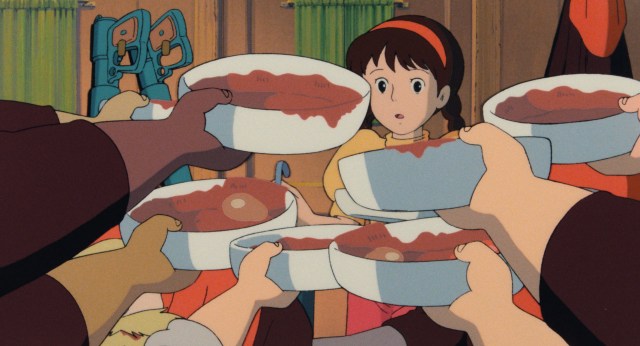
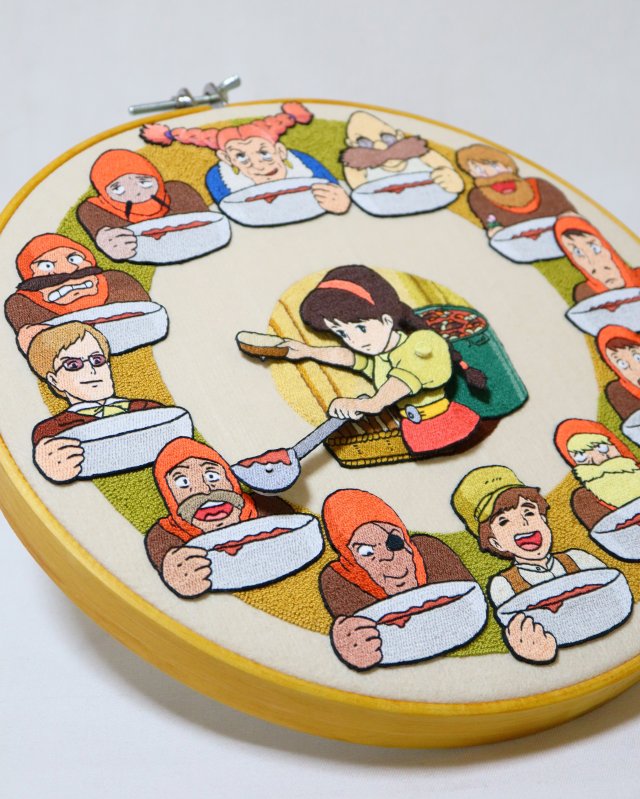
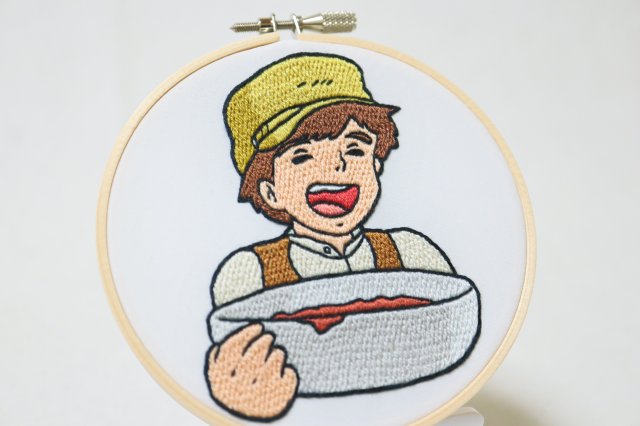
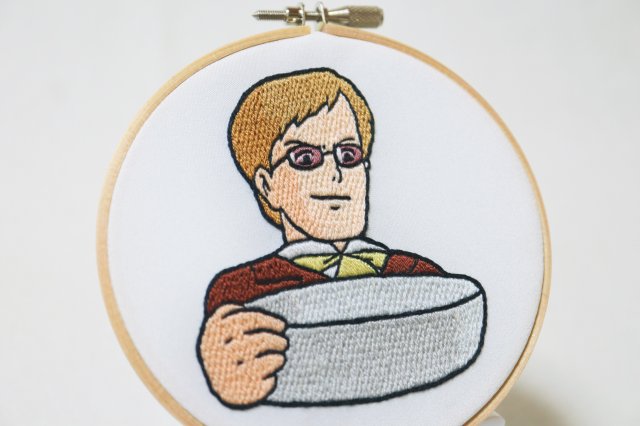
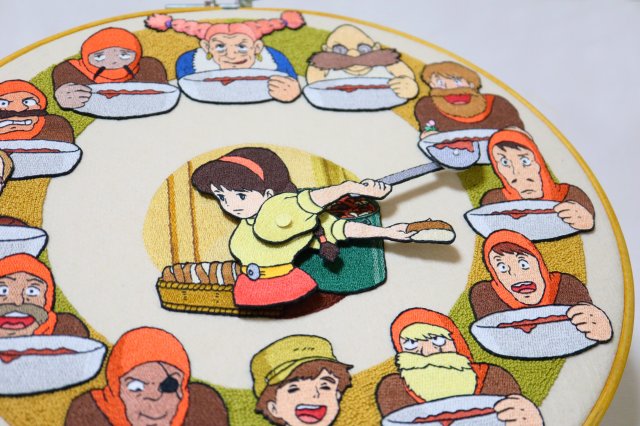
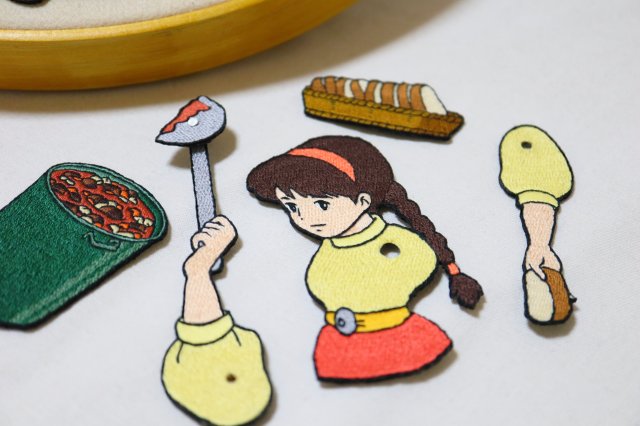
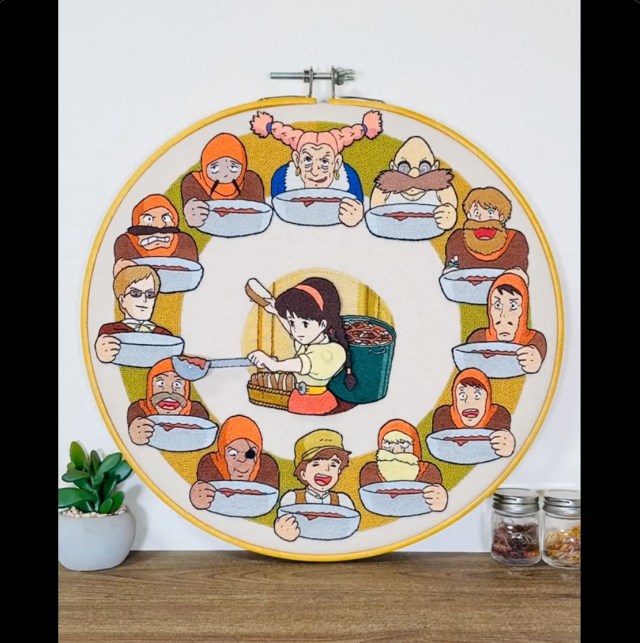
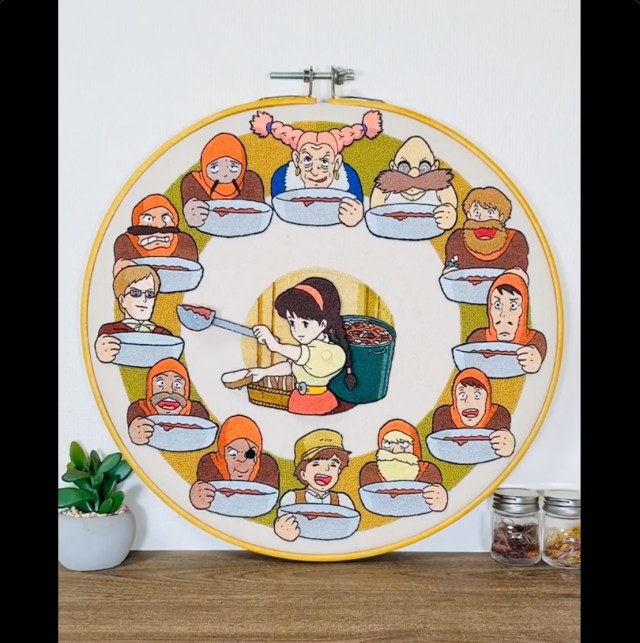
 Studio Ghibli’s new Laputa: Castle in the Sky timer is as dramatic as the anime movie
Studio Ghibli’s new Laputa: Castle in the Sky timer is as dramatic as the anime movie Studio Ghibli releases new merchandise to celebrate Laputa: Castle in the Sky anniversary
Studio Ghibli releases new merchandise to celebrate Laputa: Castle in the Sky anniversary Ghibli releases free-to-use artwork from Castle in the Sky Laputa, comes with standard disclaimer
Ghibli releases free-to-use artwork from Castle in the Sky Laputa, comes with standard disclaimer Studio Ghibli sunglasses let you channel anime film characters from Laputa: Castle in the Sky
Studio Ghibli sunglasses let you channel anime film characters from Laputa: Castle in the Sky We make anime food from Studio Ghibli movie Laputa: Castle in the Sky
We make anime food from Studio Ghibli movie Laputa: Castle in the Sky Starbucks Japan ready to get Year of the Horse started with adorable drinkware and plushies【Pics】
Starbucks Japan ready to get Year of the Horse started with adorable drinkware and plushies【Pics】 Don’t forget that the best convenience store in northern Japan has branches farther south too
Don’t forget that the best convenience store in northern Japan has branches farther south too Onigiri in Paris: Small lunch shop brings traditional Japanese rice balls to France
Onigiri in Paris: Small lunch shop brings traditional Japanese rice balls to France Hayao Miyazaki makes rare video appearance to check out Ghibli Museum’s revamped cafe【Video】
Hayao Miyazaki makes rare video appearance to check out Ghibli Museum’s revamped cafe【Video】 Japan’s Top 10 Scenic Train Trips–according to two “densha otaku” train guides
Japan’s Top 10 Scenic Train Trips–according to two “densha otaku” train guides We found possibly the quietest Japanese-style hotel in Tokyo’s bustling Shinjuku district
We found possibly the quietest Japanese-style hotel in Tokyo’s bustling Shinjuku district The Häagen-Dazs Japan fukubukuro lucky bag is filled with…ice creams from 2023
The Häagen-Dazs Japan fukubukuro lucky bag is filled with…ice creams from 2023 Passing the JLPT N1 — Here’s how I did it, so you can too!
Passing the JLPT N1 — Here’s how I did it, so you can too! Fujisan View Express: A train journey to Mt Fuji so stylish you’ll never want it to end
Fujisan View Express: A train journey to Mt Fuji so stylish you’ll never want it to end 7-Eleven Japan’s ramen-cooking robot whipped us up a bowl of noodles【Taste test】
7-Eleven Japan’s ramen-cooking robot whipped us up a bowl of noodles【Taste test】 Lacquerware supplier to emperor of Japan and Pokémon team up for new tableware
Lacquerware supplier to emperor of Japan and Pokémon team up for new tableware Cyberpunk anime meets traditional culture in Ghost in the Shell gold leaf Japanese changing screens
Cyberpunk anime meets traditional culture in Ghost in the Shell gold leaf Japanese changing screens 7 great places to see Mt. Fuji from without having to climb it
7 great places to see Mt. Fuji from without having to climb it Japan may add Japanese language proficiency, lifestyle classes to permanent foreign resident requirements
Japan may add Japanese language proficiency, lifestyle classes to permanent foreign resident requirements Hello Kitty Choco Egg figures are an adorable trip through three periods of Japanese pop culture【Pics】
Hello Kitty Choco Egg figures are an adorable trip through three periods of Japanese pop culture【Pics】 Japan’s otoshidama tradition of giving kids money at New Year’s gets a social welfare upgrade
Japan’s otoshidama tradition of giving kids money at New Year’s gets a social welfare upgrade Starbucks Japan releases new zodiac chilled cup drink for 2026
Starbucks Japan releases new zodiac chilled cup drink for 2026 Can a dirty butthole make you filthy rich in Japan? We’re starting a New Year’s lottery experiment
Can a dirty butthole make you filthy rich in Japan? We’re starting a New Year’s lottery experiment 7-Eleven Japan starts new temporary luggage storage service in over 300 branches
7-Eleven Japan starts new temporary luggage storage service in over 300 branches Disillusionment at Tsukiji’s tourist-target prices led us to a great ramen restaurant in Tokyo
Disillusionment at Tsukiji’s tourist-target prices led us to a great ramen restaurant in Tokyo Starbucks teams up with 166-year-old Kyoto doll maker for Year of the Horse decorations【Photos】
Starbucks teams up with 166-year-old Kyoto doll maker for Year of the Horse decorations【Photos】 Tokyo considering law requiring more trash cans following litter increase in heavily touristed area
Tokyo considering law requiring more trash cans following litter increase in heavily touristed area Tokyo’s Tsukiji sushi neighborhood asks tour groups to stay away for the rest of the month
Tokyo’s Tsukiji sushi neighborhood asks tour groups to stay away for the rest of the month Nintendo’s Kirby now delivering orders at Kura Sushi restaurants, but not in Japan
Nintendo’s Kirby now delivering orders at Kura Sushi restaurants, but not in Japan Tokyo event lets you travel back in time, for free, to celebrate 100 years since Showa era start
Tokyo event lets you travel back in time, for free, to celebrate 100 years since Showa era start Sanrio theme park in Japan announces plans to expand into a Sanrio resort
Sanrio theme park in Japan announces plans to expand into a Sanrio resort Stamina-destroying “Paralysis Noodles” are Tokyo’s newest over-the-top ramen innovation
Stamina-destroying “Paralysis Noodles” are Tokyo’s newest over-the-top ramen innovation Survey asks foreign tourists what bothered them in Japan, more than half gave same answer
Survey asks foreign tourists what bothered them in Japan, more than half gave same answer Japan’s human washing machines will go on sale to general public, demos to be held in Tokyo
Japan’s human washing machines will go on sale to general public, demos to be held in Tokyo Japan’s deadliest food claims more victims, but why do people keep eating it for New Year’s?
Japan’s deadliest food claims more victims, but why do people keep eating it for New Year’s? We deeply regret going into this tunnel on our walk in the mountains of Japan
We deeply regret going into this tunnel on our walk in the mountains of Japan Studio Ghibli releases Kodama forest spirits from Princess Mononoke to light up your home
Studio Ghibli releases Kodama forest spirits from Princess Mononoke to light up your home Major Japanese hotel chain says reservations via overseas booking sites may not be valid
Major Japanese hotel chain says reservations via overseas booking sites may not be valid Put sesame oil in your coffee? Japanese maker says it’s the best way to start your day【Taste test】
Put sesame oil in your coffee? Japanese maker says it’s the best way to start your day【Taste test】 No more using real katana for tourism activities, Japan’s National Police Agency says
No more using real katana for tourism activities, Japan’s National Police Agency says Starbucks Japan reveals new sakura drinkware collection, inspired by evening cherry blossoms
Starbucks Japan reveals new sakura drinkware collection, inspired by evening cherry blossoms Updated cherry blossom forecast shows extra-long sakura season for Japan this year
Updated cherry blossom forecast shows extra-long sakura season for Japan this year We recreate the delicious-looking meatball stew from Laputa: Castle in the Sky【SoraKitchen】
We recreate the delicious-looking meatball stew from Laputa: Castle in the Sky【SoraKitchen】 Studio Ghibli releases Sheeta doll from anime film Laputa: Castle in the Sky
Studio Ghibli releases Sheeta doll from anime film Laputa: Castle in the Sky Castle in the Sky sukajan jacket combines the old-school art of Ghibli and Yokosuka【Photos】
Castle in the Sky sukajan jacket combines the old-school art of Ghibli and Yokosuka【Photos】 Studio Ghibli’s first anime heroine (no, not Nausicaa) gets an awesome new figure【Photos】
Studio Ghibli’s first anime heroine (no, not Nausicaa) gets an awesome new figure【Photos】 Hayao Miyazaki based one of Studio Ghibli’s most memorable anime characters on his own mom
Hayao Miyazaki based one of Studio Ghibli’s most memorable anime characters on his own mom My Neighbor Totoro, Castle in the Sky kitchens to be recreated in life-size at Ghibli Museum
My Neighbor Totoro, Castle in the Sky kitchens to be recreated in life-size at Ghibli Museum Make Studio Ghibli anime food with official recipe book from Japan
Make Studio Ghibli anime food with official recipe book from Japan Studio Ghibli loungewear lets you cosplay as an anime heroine at home
Studio Ghibli loungewear lets you cosplay as an anime heroine at home Love Ghibli’s Castle in the Sky? Check out these real Laputa-like locations!
Love Ghibli’s Castle in the Sky? Check out these real Laputa-like locations! Field testing the magic, voice-operated pendant from Ghibli’s Castle in the Sky 【Video】
Field testing the magic, voice-operated pendant from Ghibli’s Castle in the Sky 【Video】 Studio Ghibli cookbook teaches how to make beautiful, super-easy Laputa Levistone candies【Recipe】
Studio Ghibli cookbook teaches how to make beautiful, super-easy Laputa Levistone candies【Recipe】 Castle in the Sky becomes a Ghibli decoration in your home with cool Laputa hanging planter
Castle in the Sky becomes a Ghibli decoration in your home with cool Laputa hanging planter Which Studio Ghibli anime has the most delicious-looking food? Fans sound off in survey
Which Studio Ghibli anime has the most delicious-looking food? Fans sound off in survey New Studio Ghibli x Seiko watch comes with a touching message from Hayao Miyazaki
New Studio Ghibli x Seiko watch comes with a touching message from Hayao Miyazaki Ghibli embroidered patches/brooches let you wear your love of Ghibli anime/food on your sleeve
Ghibli embroidered patches/brooches let you wear your love of Ghibli anime/food on your sleeve Fill your home with the scent of Studio Ghibli
Fill your home with the scent of Studio Ghibli
Leave a Reply